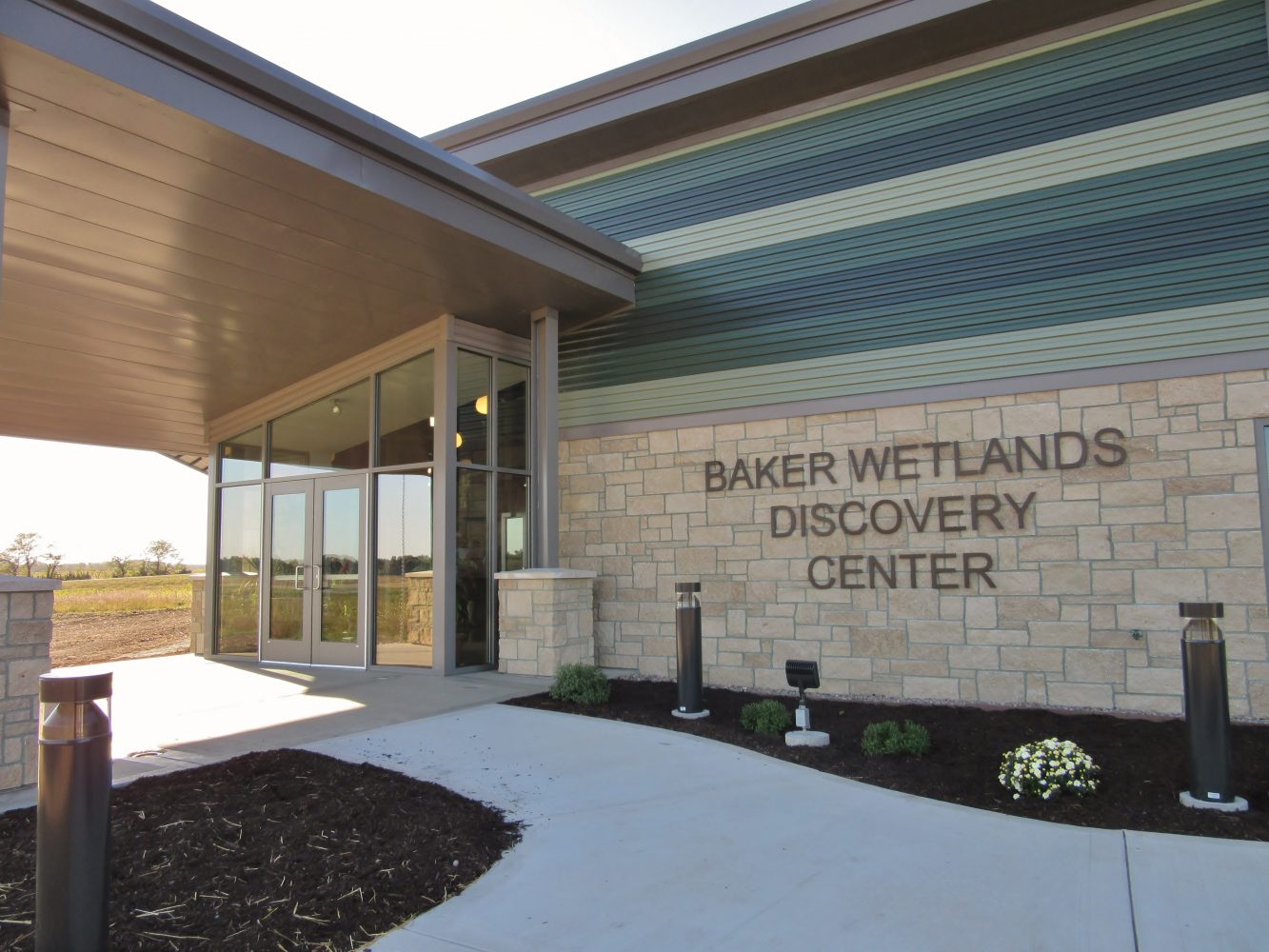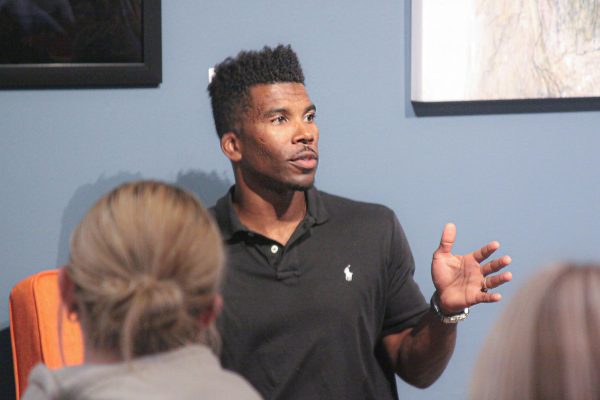Discovery Center opens in Baker Wetlands
The Baker Wetlands now features a new Discovery Center. The center includes a classroom, an observatory, research space, display areas and a gift shop. The building is energy efficient with solar panels and geo-thermal heating.
When Roger Boyd, education coordinator for the Baker Wetlands, reflects on the building’s future, he thinks “build it and they will come.” He does not know exactly how the center will be used except that it offers many possibilities for Baker University.
“I think it will be a location that a lot of people are going to want to come visit,” Boyd said, “especially if they can walk on the trails. [The wetlands are] always changing. Something is different every time you go.”
Assistant Professor of Biology Scott Kimball has been going to the wetlands since 1995, when he was a student at Baker. Between his graduation and his employment at Baker, he would make special trips to the wetlands whenever he had the chance.
Kimball brings his biology students to the wetlands to do research and collect specimens, including tagging Monarch butterflies in the fall as they flutter their way south to Mexico for the winter.
“Instead of having to bring the [the specimens] back to campus, we could bring them back [to the wetlands],” Kimball said. “Especially if they are live specimens, then we can release them immediately. It also allows us to take advantage of animals that might not live from the wetlands to campus. With the new center, we can do this right there at the site, the source. We could do all of our work here and not have to worry about time. I think these are two of the most important advantages to Baker students, especially biology students.”
Senior Sam Richards, one of Kimball’s students, has spent lots of time at the wetlands. Last year, he was an intern and even participated in surveys with a team that monitored bird populations in the area.
“The wetlands are a valuable asset to the university,” Richards said. “As a biology major the wetlands are important because they provide a diverse natural habitat for students to visit and learn about different local flora and fauna, surveying techniques and methods of ecological restoration. With the construction of the Discovery Center, students now have space to collect and analyze data without having to leave the wetlands.”
Kimball believes the center will benefit non-biology students as well. Education students could have an opportunity to work with local elementary and middle-school students who come to the center on field trips. Work-study jobs may open for students at the information desk and the gift shop on weekends next spring.
While the new Discovery Center is open, the wetlands themselves will remain closed to the public due to the construction of the South Lawrence Trafficway on the north side of the wetlands.
For much of his professional career, Boyd negotiated with the Kansas Department of Transportation concerning the trafficway’s impact on the Baker Wetlands. KDOT and Boyd eventually came to an agreement concerning the route of the trafficway, which is still under construction, and the re-location or mitigation of wetlands.
The eventual outcome was “to restore some areas to wetlands,” Boyd said, “restore some to prairie, build a visitors center, which we are now calling the Discovery Center, [and create] four parking lots.”
Part of the agreement is 410 acres that will be added to the wetlands after the completion of the trafficway, bringing the total size of the Baker Wetlands to 927 acres.
Boyd and Kimball both urge students to go to the wetlands when it re-opens at the end of next year or in early 2017.
“If you have never been to the wetlands, go,” Kimball said. “You can’t possibly imagine the rarity in the landscape. What you see when you come to the wetlands are natural prairies, wet areas and ponds, and that is not common in this part of the state – you can plan to see things that you don’t always see.”







